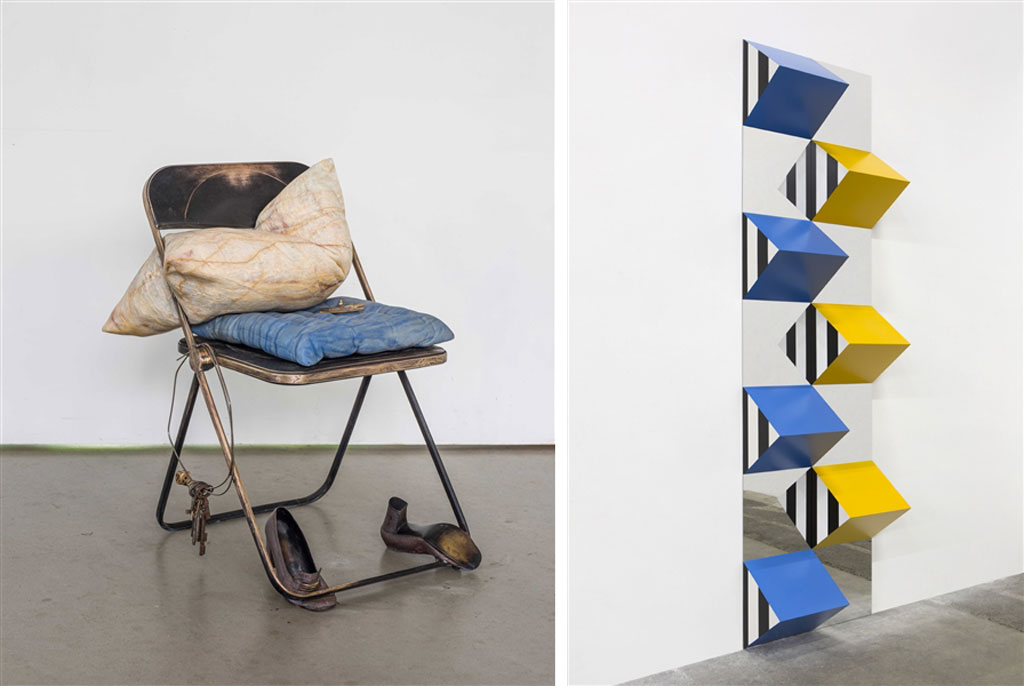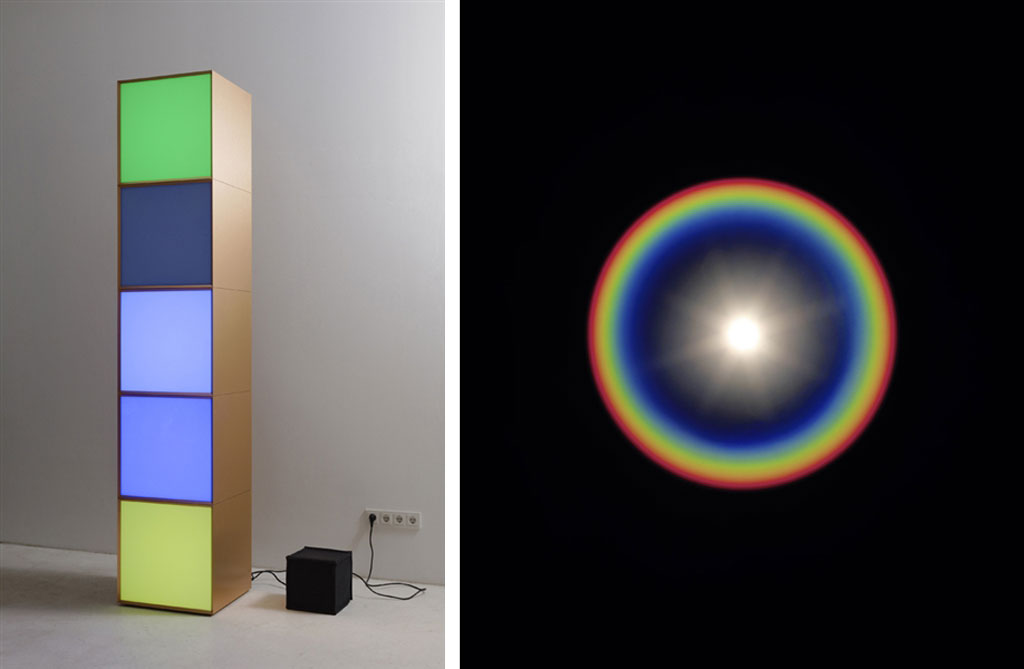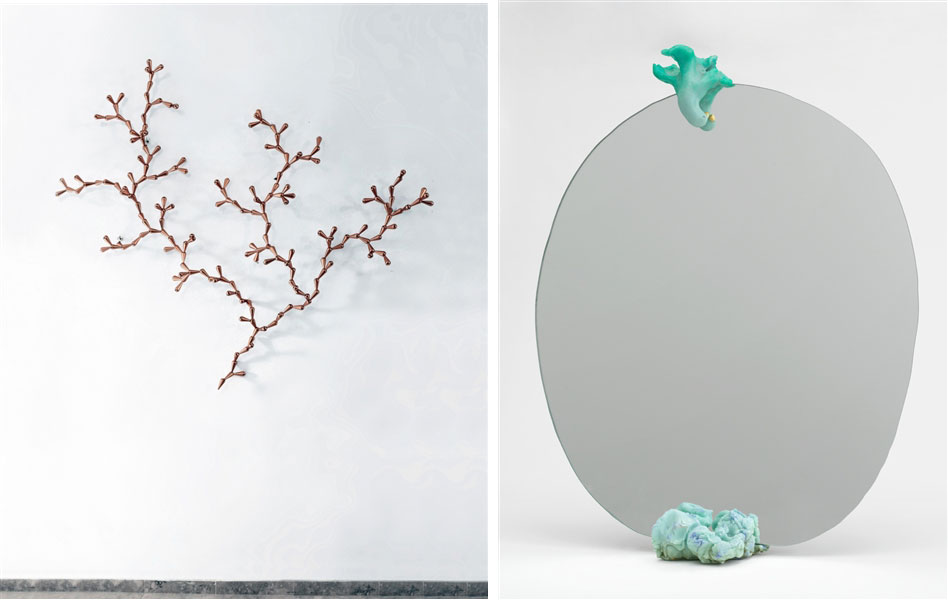ART FAIRS:FIAC 2019, Part II
 One of the oldest and respectable Art Fairs, FIAC (founded in Paris in 1974), opens for its 46th Edition at the Grand Palais in Paris. A major event for artistic creation, FIAC 2019 continues its development and confirms its status as a leading international Art Fair. Remaining attentive to the evolutions and concerns of contemporary creation, questioning the transformations of the careers of gallery owners and exhibition organizers as well as artistic practices themselves (Part I).
One of the oldest and respectable Art Fairs, FIAC (founded in Paris in 1974), opens for its 46th Edition at the Grand Palais in Paris. A major event for artistic creation, FIAC 2019 continues its development and confirms its status as a leading international Art Fair. Remaining attentive to the evolutions and concerns of contemporary creation, questioning the transformations of the careers of gallery owners and exhibition organizers as well as artistic practices themselves (Part I).
By Efi Michalarou
Photo: FIAC Archive
For its 46th Edition FIAC hosts an exacting selection of modern art, contemporary art, and design galleries, among the most emblematic of the international scene. This year FIAC Galleries brings together 199 galleries from 29 countries including 2 countries represented at FIAC for the very first time (Ivory Coast and Iran) and 3 countries who are returning to FIAC in 2019 (Iceland, Poland and the Czech Republic). The fair presents many solo and duo exhibitions. Among the solo shows are presentation of Jose Vera Matos, Nathlie Provosty, Mimmo Rotella, Julije Knifer, Roberto Matta, Kishio Suga, Julien Nguyen and Kiki Smitjh. In the duo Exhibitions among others works by: Frank Auerbach & Miquel Barceló, Ismaïl Bahri & Nicène Kossentini, Ophélie Asch & Jean Dubuffet, Romuald Hazoumè & chéri samba and Zsófia Keresztes & Barbara Kapusta. FIAC’s signature program, FIAC Projects, presents 30 sculptures and installations within the exhibition rooms and grounds of the Petit Palais, in the environs of the Grand Palais and on the Avenue Winston Churchill, pedestrianized during FIAC week. Thu-Van Tran’s “Allégorie de la forêt” in Petit Palais can be situated somewhere between a painting and a sculpture, an allegory of the elements that surround and compose us. A structure made from hevea wood and steel supports a double layer of rubber, separating – like a stage curtain – the realm of the fictional and the imaginary. The installation is also a theatre of history, rubber being a powerful symbol of colonial domination in past centuries, charging the seemingly abstract nature of the material with a more complex resonance. The work also demonstrates the poetic qualities of rubber; its tribal and sensual physicality evoking tensions, balance and tropical dampness. Born in 1937 in Sweden, Erik Dietman died in 2002 in Paris. Concerning “Proverbe Turc”, he said that he had drifted off into a dream about a Turkish legend. According to this legend, the act of finding one’s shoes with lit candles displayed inside them meant that an individual would be undesirable – none of this could ever be verified. Erik Dietman mainly used his own shoes; he felt at home everywhere and nowhere. While he chose to live in France rather than in Sweden, he was nevertheless always dreaming of an elsewhere. This work was presented for the first time in Sweden in 1998 with the artist’s real shoes. Sylvie Fleury’s neon sign “Yes to All” casts an immersive red glow over its surroundings, prompting an awareness of the often overlooked by-products of ubiquitous advertising and its underlying associations that subtly permeate our visual culture. Richard Jackson’s work “Car Wash Project, Result Nr 3” is based on the process of transformation. This is an experimental artwork in which a Fiat 500 is transformed into a work of art. Richard Jackson equipped a car wash with metal spikes and rotating metal balls, which, once activated, do not clean the car but instead attack and destroy the vehicle. In a final phase, hoses and tubes are deployed, provoking sprays of paint in red, yellow, and blue, thus drenching the white bodywork and surrounds of the work with multi-coloured splashes. By destroying and modifying the appearance of the car, the artist takes aim at the most emblematic materialistic products of modernity and questions the values of our consumerist society. FIAC Hors les Murs 2019 presents an ensemble of over 20 outdoor works in the Jardin Tuileries, together with a solo exhibition of the British artist Glenn Brown in collaboration with Max Hetzler (Berlin, Paris, London…) at the musée national Eugène-Delacroix. On Place Vendôme, in collaboration with Victoria Miro Gallery FIAC Hors les Murs extends a carte blanche invitation to the legendary Japanese artist Yayoi Kusama to create an in situ artwork for this historically and symbolically charged Parisian venue. In a spectacular and unprecedented development of its Hors les Murs program, for the second consecutive year FIAC presents an ephemeral village of architectural projects on the most iconic of all Parisian squares, the Place de la Concorde. At the end of WWII, Jean Prouvé made it his mission to concern himself with the reconstruction of areas affected by the war. The destruction, particularly in Alsace-Lorraine, obliged housing to be rethought entirely, in order to design and produce it more rapidly. At his studios, Jean Prouvé responded to this request through cost effective production methods, made of standardised and prefabricated elements. This removable and repositionable 6 x 9 home produced in 1946 reworks the principle of an axial portico construction. Once the light frame of the house has been assembled, the panels for the facades – made of wood at the time – could be attached to the structure. The prefabrication of the elements thus enabled a construction to be quickly put into place, and adaptable to the desired dimensions of the house (6 x 6, 6 x 8, or 6 x 9). For its 4th edition, the performance festival Parades for FIAC, dedicated to performative practices and dialogue between disciplines in contemporary art, takes place in various emblematic institutions including the musée du Louvre, the Palais de la découverte, the Petit Palais, the musée de l’Orangerie, the Centre Pompidou, the American Center for Art & Culture and the musée d’Orsay. This programme lies at the crossroads of music, contemporary dance, performance, theatre and poetry, offering a broad range of artistic experimentation in the form of live actions, opening up new perimeters in the field of artistic performance. FIAC presents a cycle of feature-length artists’ films and a conference programme in the mk2 Grand Palais Cinema, in the Musée du Louvre Auditorium and in the Petit Palais Auditoriul from Wednesday 16th to Sunday 20th October. Cinéphémère, an artist’s film programme screened during FIAC week in a 14-seat nomad movie theatre on the Avenue Winston Churchill. The programme conceived by curator Thomas Boutoux, traces a history of contemporary artists’ awareness of environmental problems, the evolution of climate conditions, and the transformation and alteration of ecosystems.
Info: FIAC 2019, Grand Palais, Avenue Winston Churchill, Paris, Duration: 17-20/10/19, Days & Hours: Thu (17/10) 11:00-14:00 (VIP Preview ) & 14:00-19:00, Fri (18/10) 12:00-20:00, Sat-Sun 19-20:00, 12:00-19:00, Admission: Full-fare ticket 38 €, Reduced fare 25 €, Children under 12: free entry, Fiac Programs at Petit Palais, Avenue Winston Churchill, Paris, Thu-Fri (17-18/10) 10:00-20:00, Sat-Sun (19-20/10) 10:00-19:00, Admission: Free, www.fiac.com















